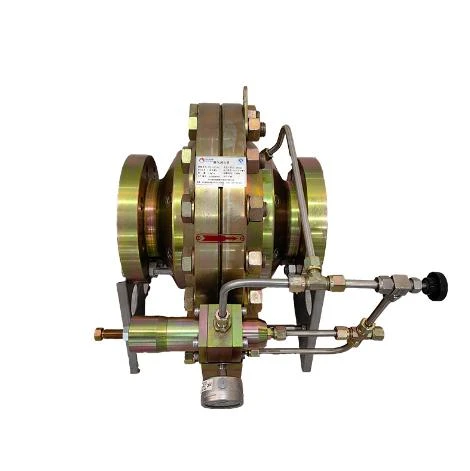
Dec . 03, 2024 14:35
Back to list
Pressure Vessel Design and Safety Considerations for Industrial Applications
Understanding Pressure Vessels A Comprehensive Overview
A pressure vessel is a container designed to hold gases or liquids at a pressure significantly different from the ambient pressure. These vessels are essential in various industries, including petrochemical, chemical, and natural gas processing, as they safely store and transport materials under pressure. The design and manufacturing of pressure vessels require careful consideration of several factors, including material selection, manufacturing processes, safety regulations, and testing protocols.
Types of Pressure Vessels
Pressure vessels come in various forms, each tailored for specific applications. The most common types include
1. Horizontal Pressure Vessels These are designed to be horizontally positioned and are typically larger, making them suitable for storing large volumes of liquid or gas.
2. Vertical Pressure Vessels Often used for storage, they occupy less ground space and can accommodate more height, allowing for better stacking and lesser heating losses.
3. Spherical Pressure Vessels Known for their efficient pressure containment, these vessels are often used to store liquefied gases, such as propane and butane, due to their ability to withstand high pressure.
4. Reactor Vessels These are specialized pressure vessels used for chemical reactions that involve gases or liquids under pressure.
5. Heat Exchangers While primarily designed for heat transfer, these vessels often operate under pressure and are critical in maintaining thermal efficiency in various industrial processes.
Material Considerations
The materials used in constructing pressure vessels must possess strength and corrosion resistance. Common materials include
.
- Alloys and Composites In specific conditions, advanced materials like titanium alloys or composite materials can be utilized to enhance performance and weight efficiency.
وعاء الضغط

Design and Engineering Standards
The design of pressure vessels is governed by stringent engineering standards to ensure safety and reliability. One of the most recognized standards is the ASME (American Society of Mechanical Engineers) Boiler and Pressure Vessel Code, which provides guidelines on material selection, design calculations, and testing procedures for pressure vessels in the United States. Compliance with these standards is essential for obtaining necessary certifications and ensuring operational safety.
Safety Regulations and Testing
The operation of pressure vessels comes with inherent risks, making safety a paramount concern. Regular inspections and maintenance are crucial for identifying potential issues before they lead to failure. Pressure vessels are typically subject to rigorous testing protocols, which include
- Hydrostatic Testing A test where the vessel is filled with water and pressurized to check for leaks and structural integrity. - Non-destructive Testing (NDT) Techniques such as ultrasonic, radiographic, or magnetic particle testing are used to identify flaws without damaging the vessel.
- Pressure Relief Systems To prevent over-pressurization, pressure vessels are equipped with relief valves that automatically release excess pressure.
Challenges in Pressure Vessel Management
Managing pressure vessels poses several challenges, including
- Corrosion Over time, materials can degrade, leading to leaks or failures. Regular monitoring and maintenance are essential to mitigate this risk.
- Operating Conditions Fluctuations in temperature and pressure can significantly affect the vessel’s structural integrity. Real-time monitoring systems are often employed to ensure safety.
- Regulatory Compliance Keeping up with the latest regulations and standards requires continuous education and training for personnel involved in the operation and maintenance of pressure vessels.
Conclusion
Pressure vessels are integral components in many industrial processes, enabling the safe storage and handling of materials under high pressure. Understanding their design, materials, safety protocols, and maintenance practices is crucial for ensuring their safe operation. As technology advances, the pressure vessel industry continues to evolve, adopting new materials and designs to meet the increasing demands and challenges of modern industrial applications.
Next:
Latest news
-
Safety Valve Spring-Loaded Design Overpressure ProtectionNewsJul.25,2025
-
Precision Voltage Regulator AC5 Accuracy Grade PerformanceNewsJul.25,2025
-
Natural Gas Pressure Regulating Skid Industrial Pipeline ApplicationsNewsJul.25,2025
-
Natural Gas Filter Stainless Steel Mesh Element DesignNewsJul.25,2025
-
Gas Pressure Regulator Valve Direct-Acting Spring-Loaded DesignNewsJul.25,2025
-
Decompression Equipment Multi-Stage Heat Exchange System DesignNewsJul.25,2025

